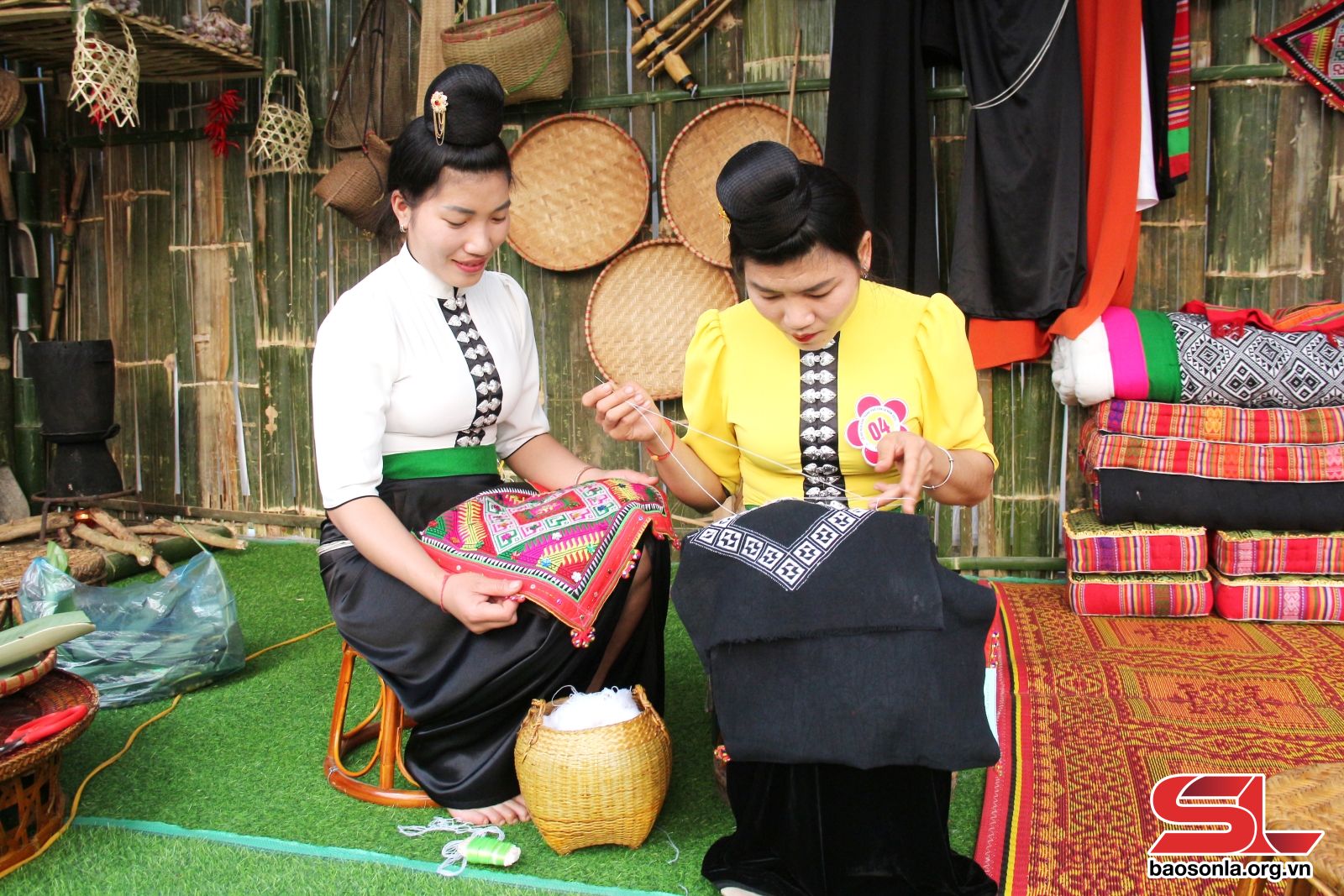
The unique traditional costume of the Mong ethnic people.
The 12 ethnic groups living together in Son La province for a long time have created a diverse and colourful cultural picture. In particular, costume is the factor that helps distinguish one ethnic group from another. Since ancient times, traditional costumes have always been the pride of highland women. Each outfit or each pattern is created by skillful hands, creative minds, and mature skills that women have been honing since they were little girls.
The traditional Mong ethnic costume is considered a "wonderful flower" on fabric and a convergence of artistic talent with a massive pattern system created from many meticulous and complex stages. Especially, the dresses worn by girls to attend the festivals are no different from the brilliant flowers of the mountains and forests, an impressive work of art that stands out wherever they appear.
.jpg)
The colourful costume of Mong ethnic women.
If the Mong ethnic costume is impressive with its multiple colours, that of the Dao ethnic group features the traditional black indigo colour, along patterns hand-embroidered with coloured threads or created with beeswax with motifs and shapes that are symbolic of their culture and beliefs.
The Thai people’s costume is associated with the image of ‘com’ shirts, ‘pieu’ scarves, and graceful long black skirts. The soul of the outfit is the ‘pieu’ scarf with hidden patterns containing many meanings of the ‘pieu’, which symbolises the noble items of superiors; the ‘ta leo’, which repels evil spirits and protects the soul of the person wearing the scarf; and ‘sai peng’ featuring a couple’s love. The ‘pieu’ scarf is a symbol of a couple's love, the source of life and happiness, and is also an important part representing the cultural soul of the Thai people...

Thai ethnic woman embroider ‘pieu’ scarves.
Son La province's culture, sports and tourism sector has made efforts in preserving heritages, including ethnic costumes, to make heritage dossiers. With unique value, in 2020, the art of creating patterns on the Mong Hoa ethnic group’s costume was included in the list of national intangible cultural heritage by the Ministry of Culture, Sports and Tourism. In early 2023, the art of creating patterns on Dao Tien ethnic group’s costume was also recognized as a national intangible cultural heritage.
This is a recognition and honour for a cultural feature that has been created and preserved by ethnic people from ancient times to the present day, bringing honour and pride to today's generation and creating more motivation and encouragement for the ethnic groups to continue preserving and promoting those priceless heritages.
.jpg)
An activity experiencing ethnic costumes at the provincial Museum.
Many positive solutions to preserve and promote the value of traditional costumes have been implemented by the provincial Department of Culture, Sports and Tourism, such as a 2023 course teaching how to decorate patterns on the Dao Tien ethnic costume for 45 people from Na Muong, Hua Pang, Phieng Luong, Quy Huong and Tan Lap communes of Moc Chau district; or annual activities experiencing the ethnic cultural space at the provincial Museum, which introduce techniques for creating traditional costumes.
The ethnic costumes combined with ethnic performing arts regularly appear in cultural and tourism activities and events of the province, sectors and localities, creating the unique colours for these events, thus attracting tourists inside and outside the province.























You have 500/500 characters left
Please enter 5 or more characters!!!